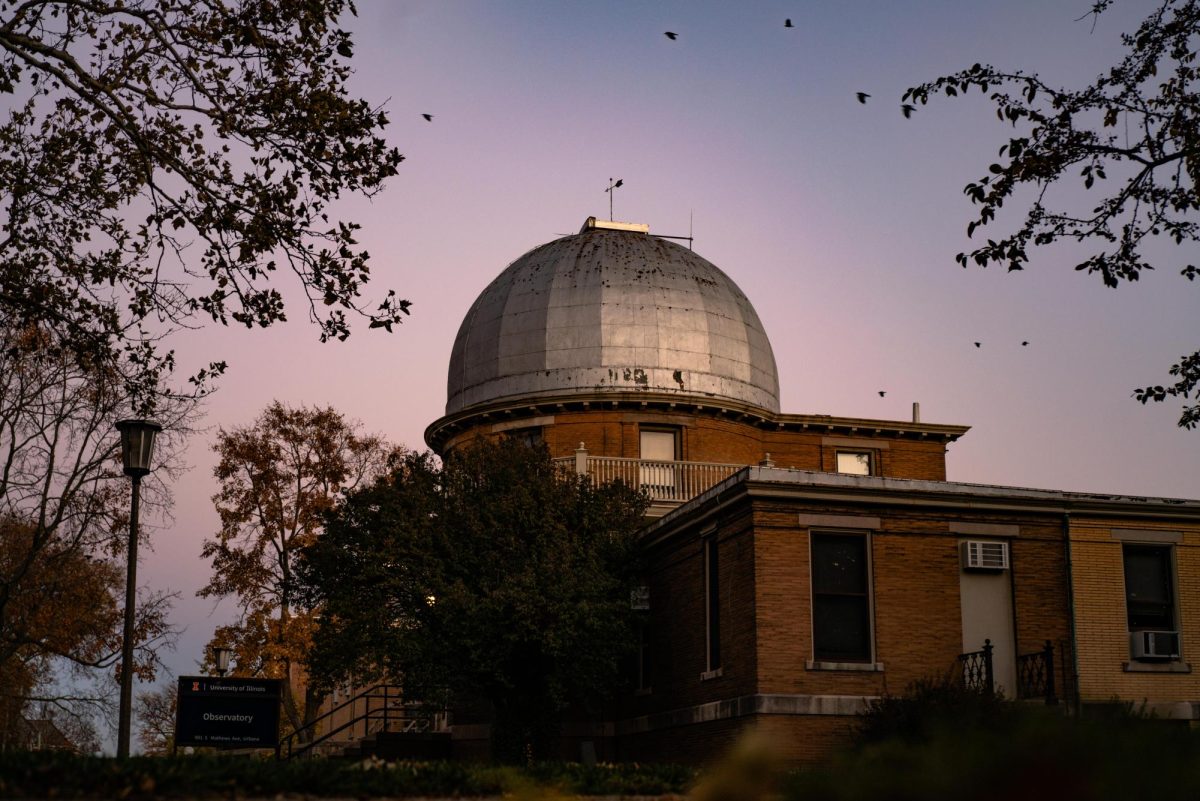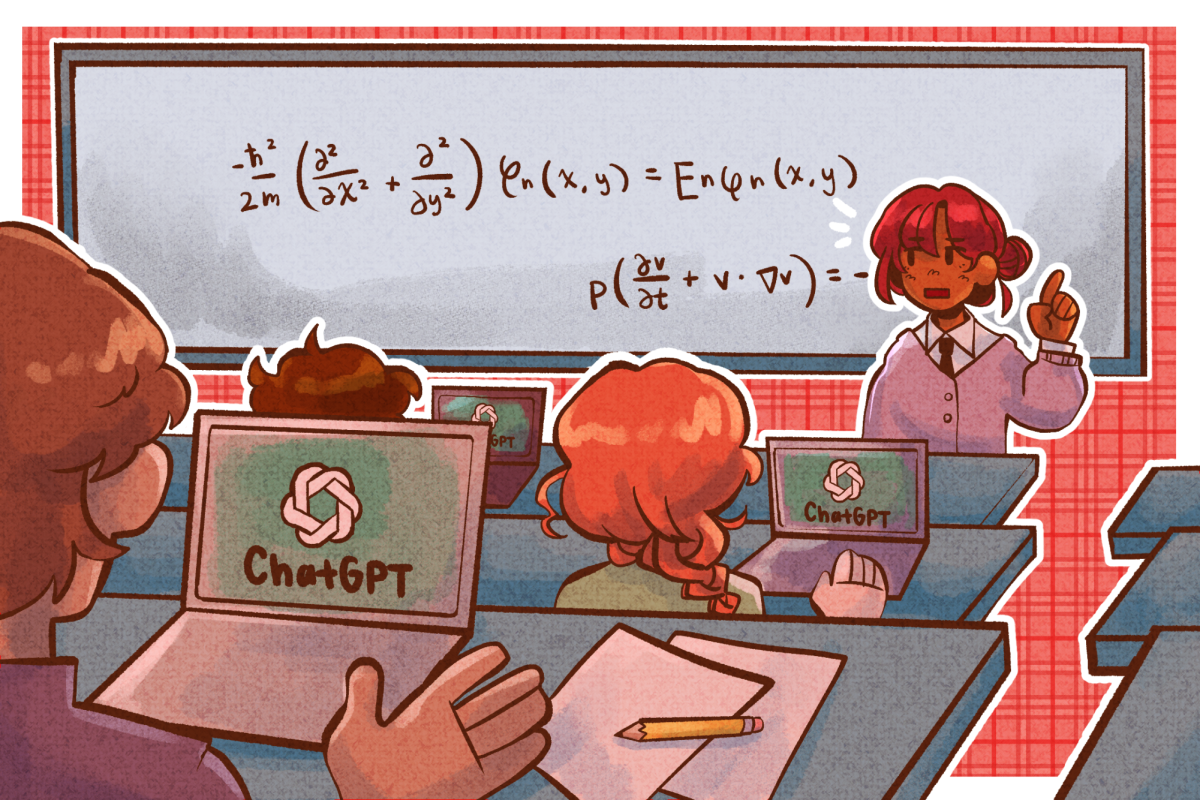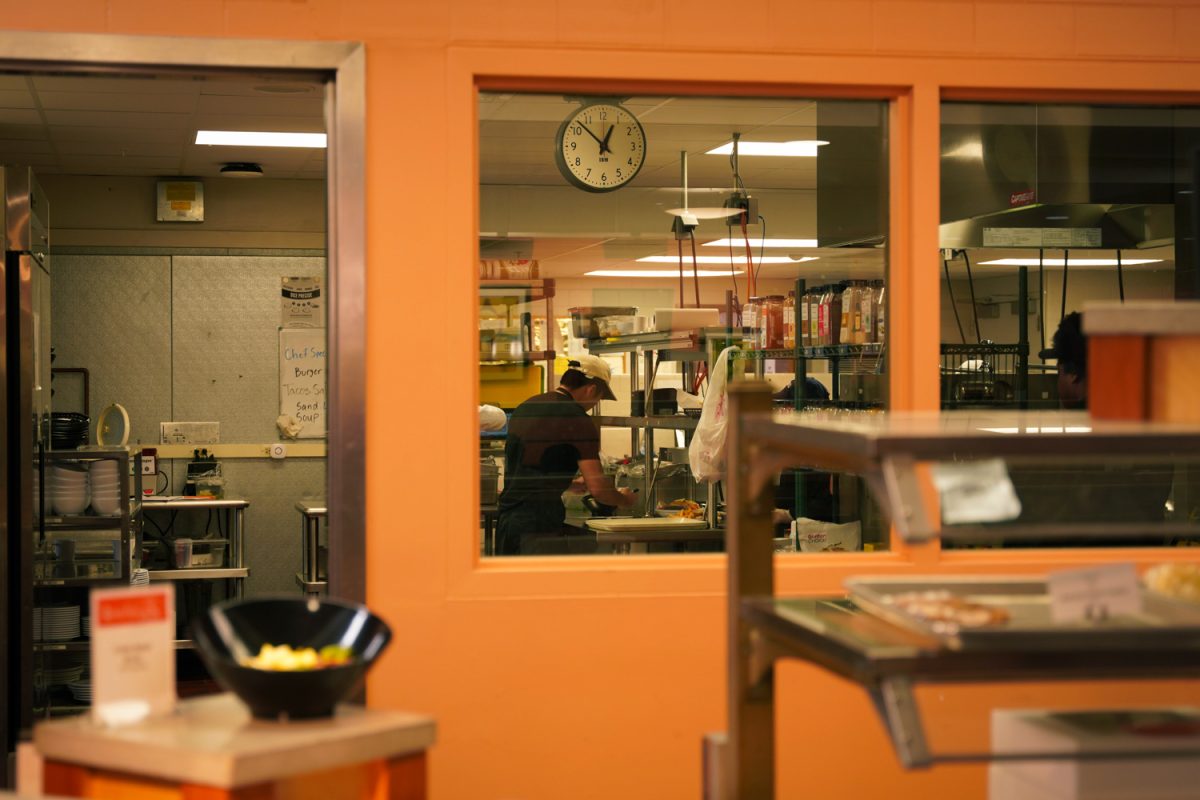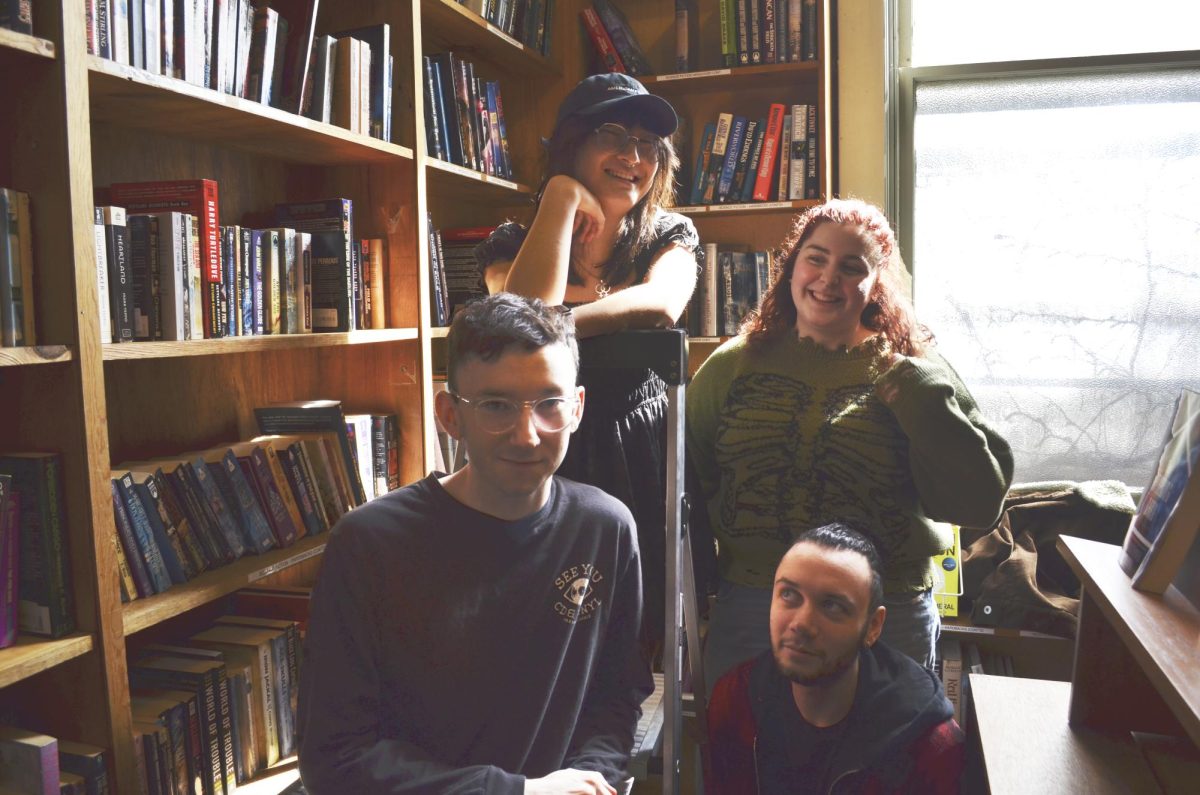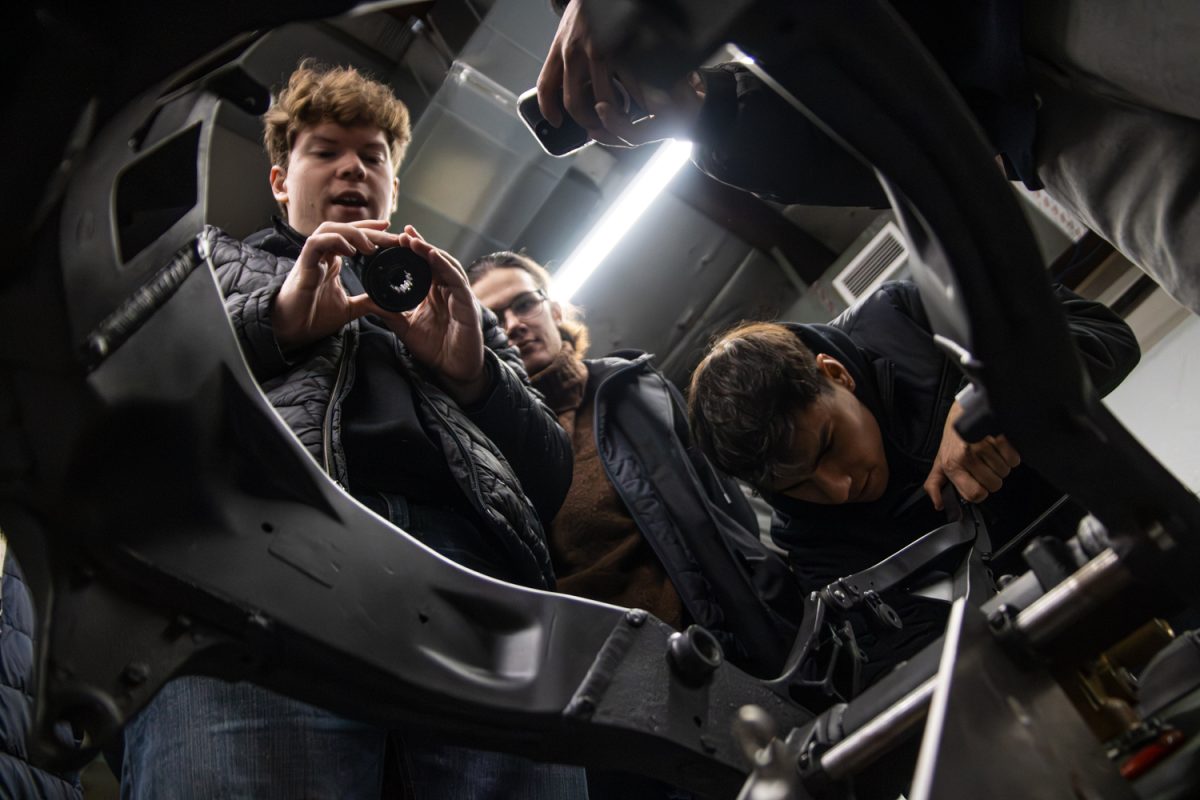Last updated on Feb. 27, 2025 at 10:16 p.m.
When people enter an escape room, they are usually blindfolded and locked inside, tasked with finding clues and solving puzzles to get out.
Room 154 is not your typical escape room — rather than trying to escape the room, participants are breaking in.
On the first floor of the Psychology Building lies Room 154’s door, covered with yellow “keep out” tape. Participants have to help Cameron, a student journalist, solve a missing case of people who were last seen participating in psychology experiments in the room. Multiple students play the role of Cameron in different sessions.
Chris Fraley, professor in LAS and creator of Room 154, got inspiration from Champaign-Urbana Adventures in Time and Space, which provides people with various escape rooms to try out with family and friends.
Get The Daily Illini in your inbox!
“As I was doing an escape room with my friends, it occurred to me that this is in a lot of ways like a classic social psychology experiment,” Fraley said. “You’re coming into a space that’s unfamiliar to you. You’re doing things, looking for clues, solving proposals and communicating with others. Why don’t we do experiments that are fun like this?”
Plenty of social psychology research gives participants surveys that allow researchers to accumulate data based on their responses and analyze human behavior. However, Room 154 takes a unique approach by observing the behavioral dynamics between two participants traversing through the escape room.
“In most studies these days, you just kind of come into the lab and fill out a survey or push a button on a computer,” Fraley said. “But what would it be like to show up in a space and actually have to solve a real problem with other people, such as escaping an escape room?”
Room 154 wasn’t always a research study; it began as a way to attract people to the psychology department, according to Fraley.
Fraley noticed that the engineering department holds its yearly Engineering Open House. The weekend-long event allows people from statewide to come and visit the University to see what the department offers. According to Fraley, those engineering members would shoot rockets across the creek and have special activities for attendees.
“I’ve always been jealous that psychology doesn’t have something like that,” Fraley said. “Part of what Room 154 is all about is being an attraction, something that we can have here in the department of psychology that brings people in and gives people something to talk about.”
It wasn’t until recently that Fraley and his students realized they could analyze the behavior of the escape room’s participants.
As they observed the participants’ actions, they noticed similar behavioral dynamics and differences. Some people communicated effectively with their partners, and others irritated one another.
Therefore, they started implementing a survey at the end of the escape room experience to understand what kind of relationship the participants have, their gender composition and whether they feel secure in their relationship with this person.
“We want to study how those factors might predict how people communicate with one another in this context,” Fraley said.
When entering Room 154, participants meet Cameron, who establishes the room’s storyline.
Max Gerber, senior in LAS, is one of the Camerons who immerses participants in the escape room. If the participants get off track or struggle to find the right clues, Gerber’s role is to step in and point them in the right direction.
“A lot of times, it’s just about thinking of what to do on the spot,” Gerber said. “Sometimes you have to improvise because participants will do some (unexpected) things.”
As subjects look for clues, they are unaware of two other crucial roles that facilitate the escape room experience behind the scenes: the techs and the coders.
Techs manage the cameras and reset the rooms to the way they were. Coders watch the videos of the Room 154 sessions and note things worth studying more deeply.
Reese Murphy, senior in LAS and one of Room 154’s techs, has seen many interesting interactions between participants and the puzzles in the escape room while monitoring them on camera. Siblings, friends and romantic partners are the usual participants of the escape room, with each dynamic different from the rest.
“It’s just exciting to be back there, watching the behaviors,” Murphy said. “I think it’s so intriguing; there’s like one stimulus or one situation, and there’s a million responses to it.”
Katie Powers, senior in LAS, is the escape room’s coder. Several dynamics coders have noticed is how the interest in the escape room is sometimes one-sided. Some pairs have one person who takes the initiative and others who delegate roles and tasks to find the clues in the escape room.
Though coders are still figuring out how and what exactly to take notes on regarding the participants’ behaviors, Powers noticed there are unlimited possibilities on what their research will focus on.
“The idea is the escape room is sort of this open format where we can have multiple research questions,” Powers said. “With the videos, we can look at different things and really just sort of address many different questions.”
Because there isn’t a singular research question and participants are often unpredictable, according to Powers, Room 154 gives students a unique way to conduct research.
“Typically, if you do research experience as an undergrad, it’s usually going to give people some consent forms, hand them out some surveys,” Powers said. “You’re just sort of like sitting at a computer and then doing the same thing the next day and the next day. With this, it’s always something new.”
Fraley and his team are no strangers to doing unconventional research studies. Previously, they collected data at local haunted houses and brought people into their lab to observe their behavior while watching horror films.
“(Room 154) is another iteration of that process of thinking — what can we do that brings people together to do something that they might not normally do and would allow us to study the way people communicate and interact with one another,” Fraley said.
While Room 154 has given students an avenue to conduct research studies, according to Fraley, the goal is to create an experience where people enjoy themselves while learning more about psychology experiments.
“Sometimes the best part is seeing the people really seem like they’ve learned something or really enjoyed their experience … and that is something that I’m glad we’ve achieved so far,” Gerber said.




